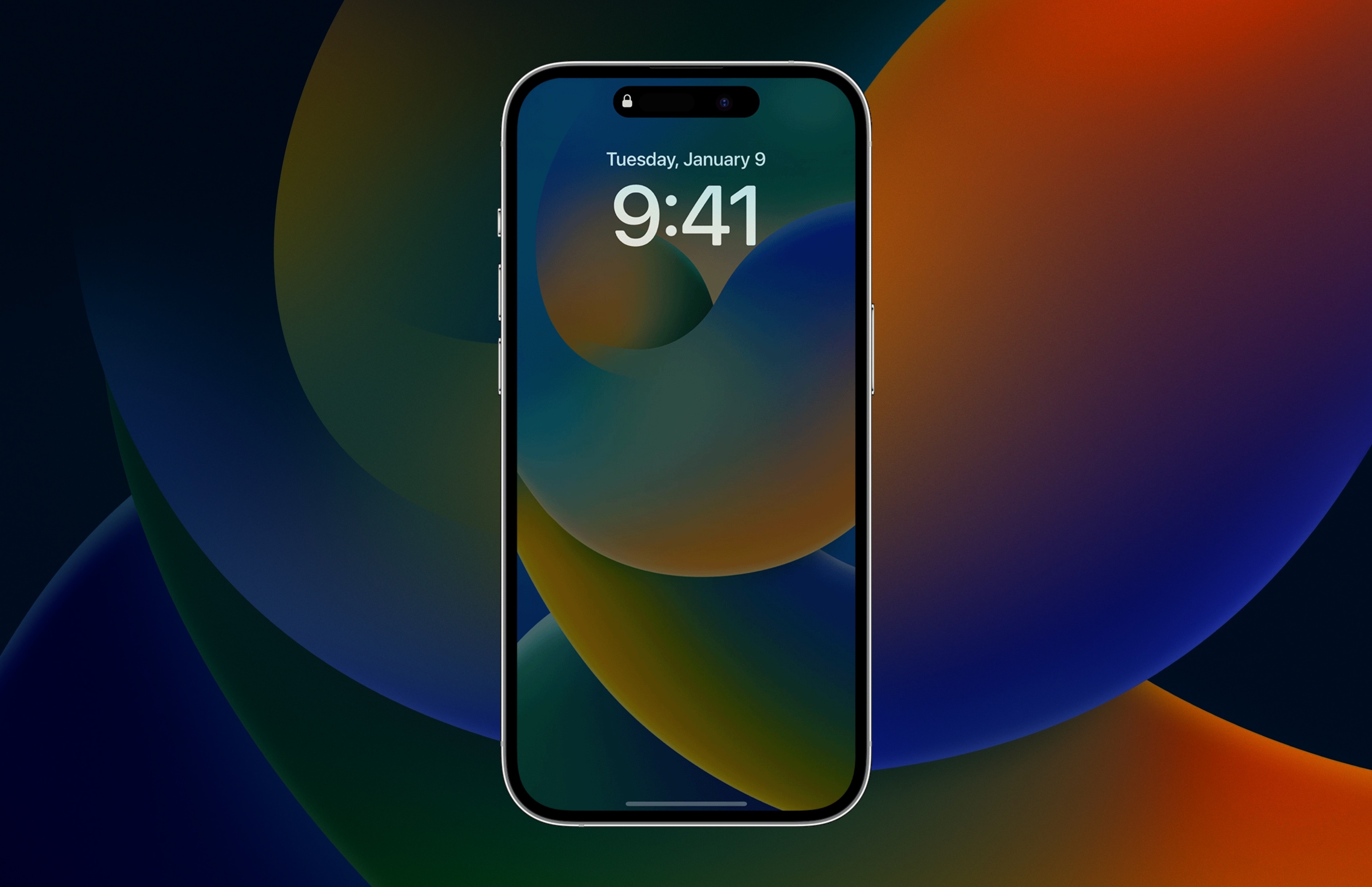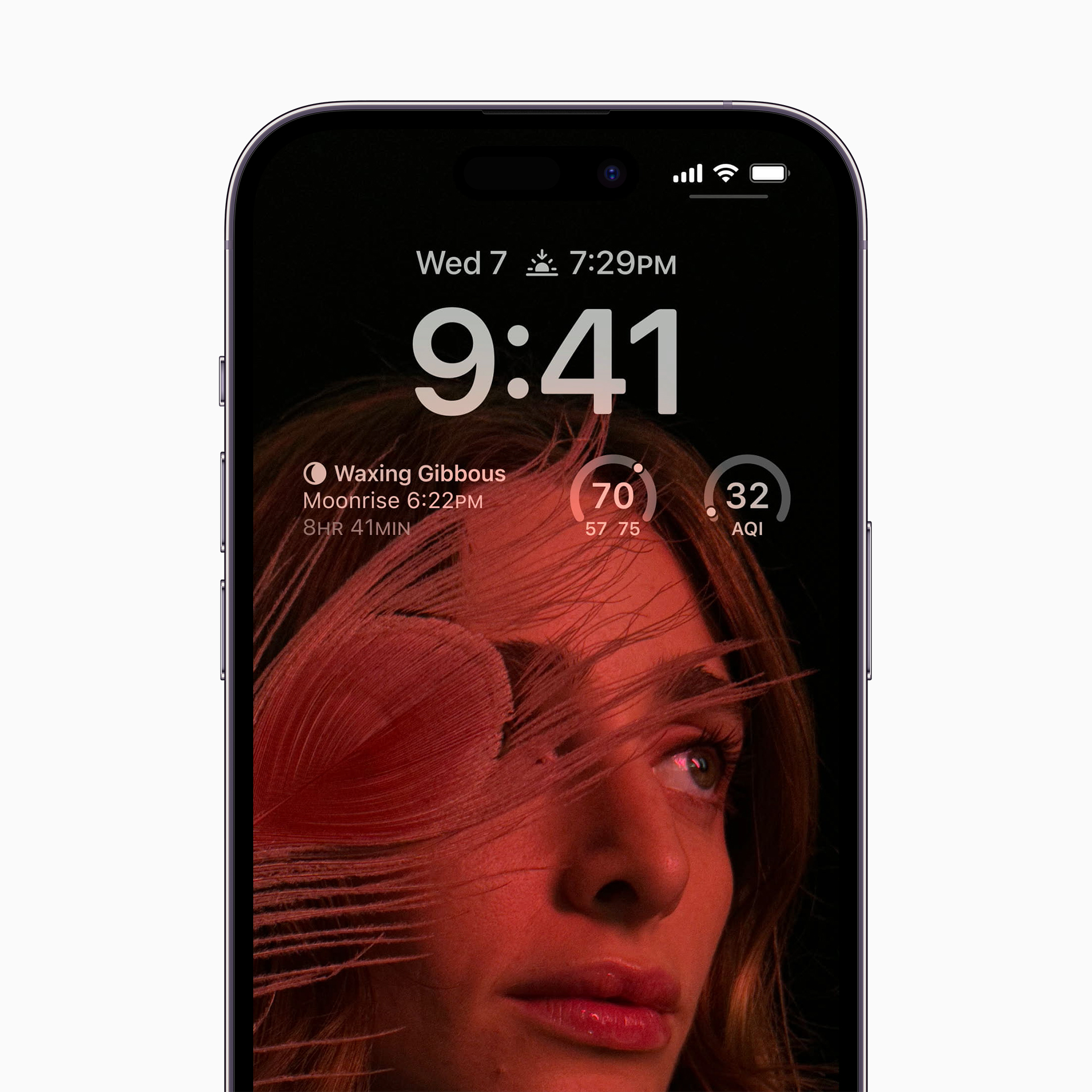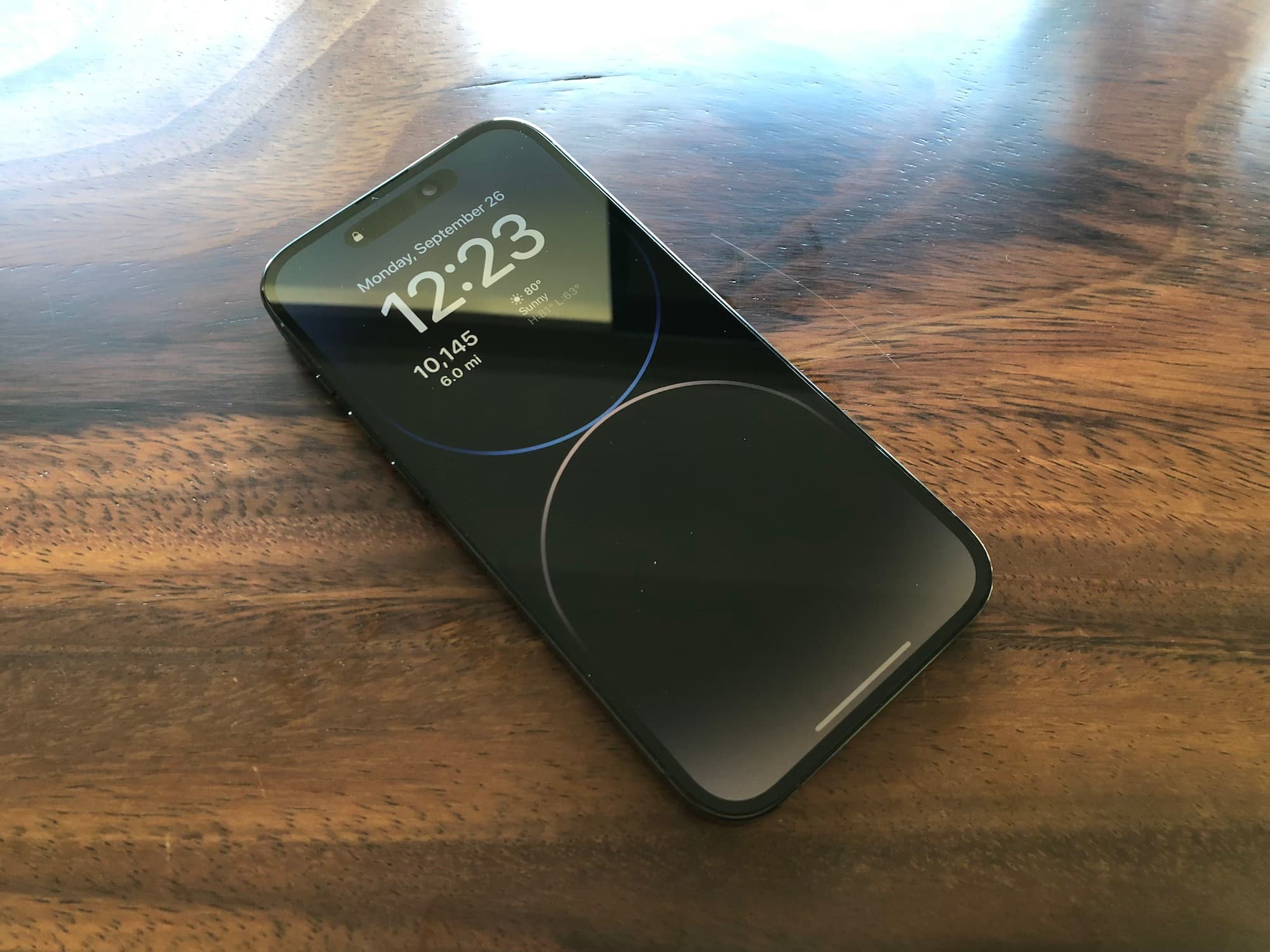One of the hallmark new features of the iPhone 14 Pro & 14 Pro Max, apart from the controversial Dynamic Island, is the always-on display. This is a feature that other smartphone brands have had for years, in addition to iPhone jailbreakers who used tweaks to unlock similar capabilities. But now, it’s available to everyone.

Apple of course put their own unique spin on the always-on display, opting to show off the handset’s wallpaper with color in a much dimmer fashion alongside the date, time, active widgets, and missed notifications. Comparatively, other smartphone manufacturers using always-on displays generally use a black background balanced with white text for the date, time, and missed notifications.
As my colleague Christian so kindly explained in his in-depth always-on display walk-through, Apple’s always-onvdisplay boasts a power-saving refresh rate of just one Hz, but can dynamically change based on necessity, such as when data from a widget or notification needs to be refreshed to appear on the always-on display. There are also several unique circumstances when the iPhone’s always-on display turns off automatically.
With so many levers and ropes being fiddled with by the operating system behind the scenes, this is much more than your average always-on display user experience, and so everyone’s apt to be using theirs differently. After a brief show-and-tell about how I’ve been using mine, I’m genuinely interested to learn more about how you’ve been using yours.
How I use my always-on-display

The always-on display isn’t enabled for just anybody, it’s intended to be a persistent heads-up display with constantly refreshed information that you can glance over at any time during the day for a brief update on what’s going on without the trouble of unlocking your device and checking apps. With that in mind, I try to be conscious of how and when I use my always-on-display.
I know first-hand that my iPhone 14 Pro Max’s battery would last substantially longer if I turned off the always-on display, but rather than turning it off, I tend to let common sense guide my battery life worries while still enabling myself to enjoy the feature.
Choose when it’s always-on
Generally, I only allow the always-on display to operate when I know I’m going to be around my iPhone; but not only that – also when I know I’m going to be able to look at my iPhone. What do I mean by this? Well, if I’m at my desk at work and I know I’m going to be too busy to look over at the always-on display, I’ll flip my iPhone upside down so that the display faces the desk. This temporarily disables the always-on display.
On the other hand, when I reach a point in my day where most of my workload feels like it’s behind me and I have some time to check the news, my notifications, and the weather, I’ll flip the iPhone display-side up again so that the always-on display activates.
With this setup, I actively use my always-on display, but only when I know it will be used. Additionally, I save battery and further prevent screen burn-in by preventing the feature from being used absolutely 100% of the time, which is by no means sensibly necessary for any user. That’s why Apple built-in several ways that the iPhone can turn off the always-on display automatically.
Any time I forget to do the above, and walk away from my desk for a bathroom break, my Apple Watch breaking the Bluetooth connection with my iPhone should take care of the always-on display for me until I return since Apple designed the always-on display to turn off automatically when a user’s Apple Watch walks out of range and turn on again when you walk back into range.
A further fail-safe is that the always-on display shuts off when you put your iPhone in your pocket, which I do when I take my iPhone with me for a walk, or while driving somewhere. This is another instance where I choose not to use the always-on display instead of letting it shine brightly on a dash mount or in a cup holder as I’ve seen many iPhone users do. It just seems so wasteful since my attention is going to be elsewhere.
For what it’s worth, the always-on display should automatically turn off when you’re connected to a CarPlay-enabled vehicle, but many vehicles don’t have CarPlay support, nor does mine. So the pocket method works great in this instance.
Use conscious wallpapers
Another way I use my always-on display is by setting a battery-conscious wallpaper with tons of true black colors in the image.
Remember, the iPhone 14 Pro & 14 Pro Max’s always-on display is powered by OLED technology, which utilizes those true blacks to turn off unused pixels and conserve power. Paired with a beautiful wallpaper such as some of those found by our very own Jim Gresham, this works wonders, especially when the iPhone dims the wallpaper even further for the always-on display.
These types of wallpapers not only make the always-on display more battery-friendly, but they look stunning with the dim effect. Users should find that these wallpapers lend a more desirable effect when compared against a full-blown color image.
Maximize widget displays
While the always-on display is battery intensive in and of itself, it’s a lot less battery intensive than using the display at full brightness. That said, I try to use Lock Screen widgets that show types of information I would ordinarily unlock my iPhone and launch an app to view. This reduces the number of times throughout the day that I actually do unlock my iPhone and use apps.
Widgets that I like to see at all times on the Lock Screen include the current weather conditions outside, any upcoming events on my calendar, and my fitness activity – namely the number of steps I’ve walked.
By getting a real-time data update from the Lock Screen, I can use my always-on display to its fullest without going through the trouble of unlocking my device and checking apps, and to me, that is how Apple intended it to be used.
Responding to criticisms

Apart from my own experience with the always-on display, which has been mostly positive, I’ve also stumbled upon a fair share of opinions critiquing it.
In a piece titled 5 ways Apple can make the iPhone 14 Pro Always-On display better with software, my colleague Sebastien discussed a few different methods that could boost the always-on display’s performance and usability.
In my opinion, Sebastien nailed it with most of his comments, which suggested that Apple make the dimmed Lock Screen interactive, provide an option to hide the wallpaper and make the background black, and hide extraneous information such as notifications and the Now Playing widget, among other things.
While I don’t agree that the always-on display takes too long to power on, I can see why some users may want to skip the pleasant animations and get right to what they’re doing. But Apple seems to have invested in beautiful aesthetics this year, as we saw first-hand with the Dynamic Island and how it responds to system actions.
Another opinion I’ve seen a few times around the internet, most recently in a Tweet by iOS jailbreak tweak developer Ginsu, is that the always-on display seems too bright.
I can kind of, sort of, maybe agree with this. This is one of the reasons why I opted for a wallpaper with a high proportion of dark pixels, as a full-color image can sometimes appear so bright with Apple’s always-on display that it looks like the display isn’t dimmed at all. This effect is more discernible in direct sunlight or while inside of bright rooms.
In addition to the aforementioned opinions, I’ve also witnessed across the internet complaints that the iPhone’s always-on display appears a little too busy when it comes to information and interfaces.
Compared to other smartphone manufacturers who generally use a black background and minimal black text for the date and time on an always-on display, I can certainly see this as a viable complaint; but it’s worth noting that users can combat at least some of this feeling with their own settings.
For example, users don’t need to use a color wallpaper image when they can set a black wallpaper of their own. Furthermore, no one is forcing anyone to use Apple’s Lock Screen widgets, and you can always set a thinner Lock Screen time font than what comes on your iPhone right out of the box.
Still, the aforementioned settings won’t affect the in-your-face Now Playing interface that Sebastien cited above, the onslaught of incoming notification banners at the bottom of your display, and the other elements that seem like they can’t be programmed away. So some of these can seem superfluous for an always-on display experience.
How do you use your always-on-display?
Wrapping up this piece, I’d like to say that the iPhone’s always-on display is a truly unique user experience – one that Apple certainly intended to feel different and more capable than the competition.
iPhone users have requested Apple to implement a feature like this since the first Android smartphones began picking up the capability. We knew it was coming eventually, but we also knew it wouldn’t be a carbon copy of the Android user experience because Apple likes to put its own spin on things.
So with all the pros and cons discussed above, in addition to the methods I use to get the most out of my always-on-display without burning through my battery too quickly, I’m genuinely curious to learn about how my readers are using theirs.
We look forward to reading your comments about the iPhone 14 Pro & 14 Pro Max’s always-on display below.